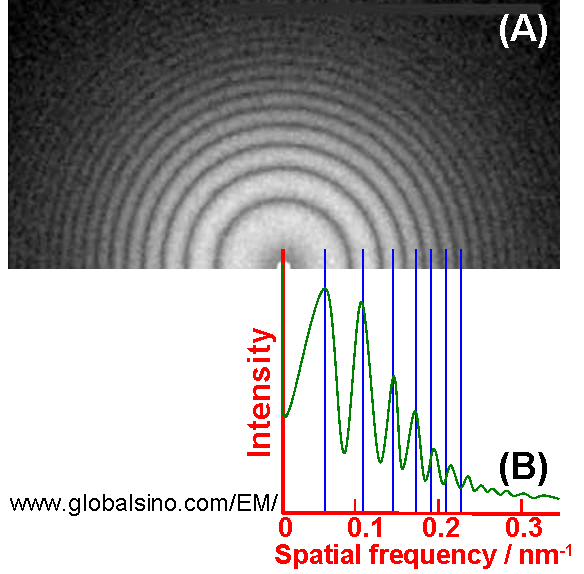Thon Rings in Bright-Filed Imaging - Practical Electron Microscopy and Database - - An Online Book - |
|||||||
| Microanalysis | EM Book https://www.globalsino.com/EM/ | |||||||
Thon rings are a phenomenon revealed in the power spectra of micrographs by bright-field (BF) TEM (transmission electron microscopy) imaging. These rings can be explained as the effect of the contrast transfer function, which modulates the Fourier transform of the object in a defocus-dependent way. Figure 4190a (A) shows the power spectrum of a typical BF TEM image of amorphous carbon film presenting concentric Thon rings. Those white rings correspond to the contrast transfer maxima and the dark rings indicate spatial frequency bands without signal. Figure 4190a (B) shows the radial intensity of the power spectra. The astigmatism and defocus can affect the symmetry of the rings, limiting the spatial resolution of the microscope. Therefore, electron micrographs, especially HRTEM, are routinely inspected by optical diffraction before taking images for analysis.
Figure 4190b shows Thon rings with different image qualities.
[1] Electron Microscopy: Methods and Protocols, Second Edition, 2007, Edited by John Kuo. |
|
||||||
